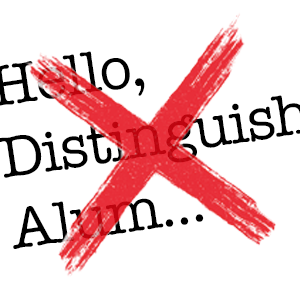Personalization has been around forever. Just think about your social life. There’s a friend you’ll hike mountains with and another you’ll take on road trips to hunt down the best pizza place. That’s the kind of personalized interaction we all do every day. When you think about it, we’re actually all super awesome at personalization. Go us!
Mention personalizing communications to donors, though, and plenty of fundraisers suddenly look like they’ve seen an actual ghost. And we get it, we really do. Plenty of departments are strapped for resources or don’t feel like the initial time investment will pay off. Those are legitimate concerns. But trust us; they aren’t as scary as ghosts.
Personalization is a basic human behavior. Must by why people like it so much when they’re on the receiving end. Which is why this presentation, by Katie Green, Senior Director of Advancement operations at Cornell College, caught our attention at /DRIVE for its effective approach to tackling it.
Green admits that getting personalization off the ground took up a lot of time for the team initially. The work was well worth it, though: The results were markedly better than the mass marketing tactics they’d relied on for so long.
In fact, while we understand the hesitation to divert resources required to make personalization viable, continuing with mass marketing often turns out to be the actual resource killer. When you’re trying to hit always-increasing goals, fighting against decreasing participation rates and scrambling to meet higher donor expectations, it’s critical to do more with your limited resources and a flat budget.
Personalization makes your communications work harder for you, plain and simple.
How did Cornell College get it off the ground? A few things stood out to us.
First the team came together and looked at four main areas of personalization:
- Content or topic
- Call to action
- Timing (some donors always give at a certain time of year, so just asking then)
- Method (mostly email, took additional preferences into account)
Each of those is a great way to prove you really know donors. They all show that you’re paying attention to what the individual prefers and can spark a connection. That might be obvious, in the case of relevant content, or subconscious, if you reach out via text message because you know that’s their favored method of communication. But they all allow you to deepen the bond with your institution.
Then they set up a process to keep them on the right path. The first step was to create a scoring system for personalization. It included both quantity (merged data and segments/message) and quality (how meaningful and how well it connected to the core message).
With that in place, they didn’t have to wait long for results. Participation in Giving Tuesday jumped 33% from the previous year, and the average nearly doubled. A campaign for Presidents Society Members that had seen previous donation increases around 3% shot up to 13%.
Those are some pretty impressive initial results. All because the school simply decided to make personalization a priority. They plan to continue monitoring and testing for a three year period before taking a step back and truly reevaluating.
If these results keep up, we’re betting they start committing even more resources to personalization.
To learn more about their approach and results, check out the full presentation!
Want to dive deeper into personalization and segmentation. We’ve got you covered.
